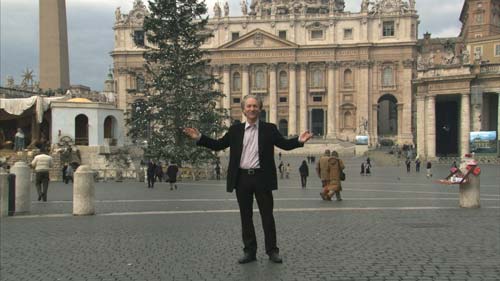
Nick & Norah’s Infinite Playlist opens up on what appears to be the same street where Juno was filmed. This is no accident. Like Juno, it also stars Michael Cera as a sensitive young man somewhat befuddled by women who throws himself into his hobby as a way to deal with the outside world. Here, that hobby is playing and listening to music. And like Juno, the leading lady is a sharp-talking brunette who might be a little too aggressive for him but still has a heart of gold.
The comparisons aren’t terribly flattering for Nick & Norah, which doesn’t have the thematic depth or scintillating dialogue of its predecessor. But it does have Cera, who continues to play a variation of his wonderful Arrested Development character (no complaints from me), and Kat Dennings as Nora, who’s endearing and compelling. In fact, the scenes with just the title characters are pretty wonderful, as they slowly come to realize they like each other, despite some holdover feelings for old exes.
The problem is the movie keeps tearing us away from our protagonists and focusing on those exes or other friends, who can’t match Nick and Norah in the personality department. This is a bit unusual, as most romantic comedies feature sidekicks that are at least as interesting and quirky as the leads. Not so here, and so the inevitable scenes designed to keep our lovers apart quickly grow irritating.
I was also a bit surprised that director Peter Sollett, who made the wonderful Raising Victor Vargas, doesn’t capture the vibrancy and specificity of Manhattan nightlife. This feels like it could’ve been made in any city. And am I the only one who was consistently surprised at how the characters kept driving around New York and, even more amazingly, kept finding parking spaces? At least the wall-to-wall music is good, befitting a movie that’s about how people find each other in a song. If it had focused just on that, we might have been talking about moving beyond Juno, instead of falling short.











